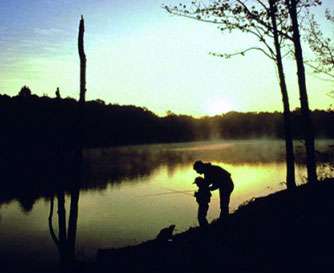
September is a transition month, when summer temperatures finally begin to give way to the coolness of fall. This break from the sauna sounds like great news, but it's a time when many bass fishing anglers struggle.
The problem is that as bass leave deep-water summer haunts, they move around and become difficult to find.
"Historically speaking, if you look back at records of bass fishing tournaments, weights are way down during September," Bassmaster Open pro Sammy Burks told B.A.S.S. Times. "Bass start moving shallower and shallower, and they disperse.
"It's a crazy situation: Where you find them in the morning, they won't be in the afternoon."
Burks said these challenges were highlighted during a September tournament some years back on Texas' Lake Amistad.
"I weighed in 27 pounds the first day, and I caught them in the first two hours," he said. "On the second day, I went back to the same place and caught 2 pounds, and I went from first place to 16th. The third day I weighed 17 pounds, and finished 10th."
The problem is that baitfish haven't committed to any one location.
"It's all about the bait," Burks said. "They're moving around, and the bass move with them."
The solution to this unpredictability is throwing out the rule book.
"Basically, don't stop practicing," Burks said. "You can find them, and two hours later they can be gone.
"Pattern fishing is almost out the window."
A key to making the most of opportunities is being prepared to make quick lure changes.
"I keep 20 rods on my deck," Burks explained. "I'm going to have a variety of lures ready to go that will cover the whole water column, from topwaters to bottom structure-fishing baits.
"I might have four different crankbaits tied on, but I'm still prepared to change to other baits because I know the reputation of fish in September."
Often anglers can take advantage of schools feeding on the surface, but Burks said electronics become a huge part of his strategy.
"The shad are still balled up, and without a doubt that's the main search," he said. "Whether you're on a flat or a ledge or a brushpile, you want to find the shad."
Burks said the transient nature of baitfish and bass demands a willingness to make regular moves.
"It's run and gun," he said. "You have to keep an open mind and be willing to move when the fish disappear."
However, Burks said moving doesn't mean running long distances. Instead, he covers all water depths within a given area to make sure he hasn't overlooked nearby pods of bass.
"If I'm fishing a creek, I'm zigzagging in and out," he said. "I'm starting deep, and then I might move to 15 feet of water. Then I move up to shallow water."
Wind also is an important factor because it allows anglers to focus their search.
"If you get a fairly windy day, those baitfish are subject to getting hung up on a bank or a ledge or on the edge of grass on the windy side of the lake," Burks said. "That means you can ignore the leeside of the lake and concentrate on those windblown areas."
Originally published September 2009





